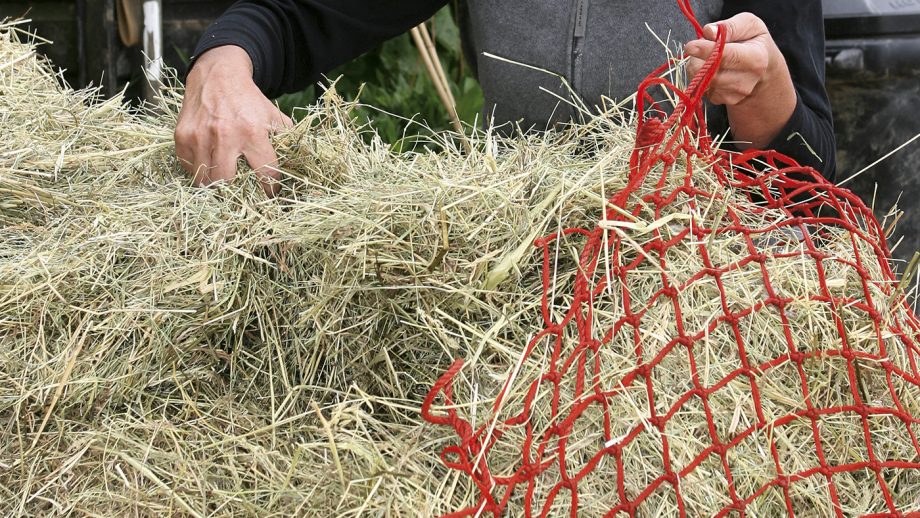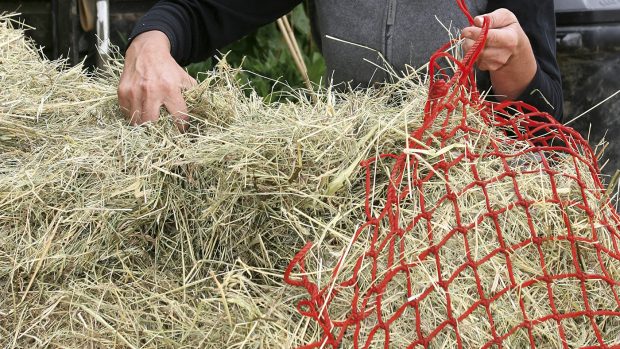An owner who hopes to raise awareness about the amount of dust in hay has urged others to consider wearing a face mask when filling haynets.
Emily Boyce, 20, who is in her final year of equine studies at the Royal Agricultural University in Gloucestershire, was filling haynets for samples for her research project when she discovered the mask she was wearing had become very dirty.
Emily told H&H: “I wouldn’t usually wear a mask but you need to wear one for healthy and safety at university. I had 45 haynets to fill in total and the mask was so dirty after 20.

“I’ve always thought about dust when I make up haynets at work or on the yard but the mask really put it into perspective just how much there actually is.”
Emily, who works on a hunting yard every Sunday, owns a New Forest pony, Rufus, who suffers from “severe” equine asthma.
“Rufus has fuelled my interest in the subject of hay and trying to reduce the clinical symptoms of horses who suffer from respiratory disorders,” said Emily.
“The bale was just a normal bale and didn’t seem dusty, it was in a large space and the doors were open. One of the lab technicians at the university who is also a horse owner thought it was really interesting how dirty the mask was.”
Emily put a picture of the mask on Facebook and has received hundreds of comments.
“When I saw how much dust was on the mask I thought other owners should know and be aware of these things. I was surprised how many people have commented – there’s been a lot of people having problems with dust and saying they are going to buy masks – the picture has had a big impact which I wasn’t expecting,” said Emily.
“Some of the comments spoke about farmer’s lung and someone said they knew someone that developed it. I’d heard of the condition but never read about it before.”
Continued below…

Know your forage: which is the perfect type for your horse?

How many calories do you burn riding and looking after horses? Find out…

Subscribe to Horse & Hound magazine today – and enjoy unlimited website access all year round
Emily said: “It just made me think if there was that much dust coming out of 20 nets, there are people who work on yards that fill more than 20 in a day. I’m going to buy a mask to wear in the future.”
The Health and Safety Executive (HSE) website states farmers lung is the most common occupational form of extrinsic allergic alveolitis – which refers to a group of lung diseases that can develop after exposure to certain substances. The condition is the outcome of an allergic response to a group of microbes which form mould on vegetable matter in storage. During handling of mouldy straw, hay or grain, particularly a confined space such as a poorly ventilated building, inhalation of spores and other antigenic material is very likely.
The HSE advises respiratory protection should be worn when handling stored crops.
For all the latest news analysis, competition reports, interviews, features and much more, don’t miss Horse & Hound magazine, on sale every Thursday.





